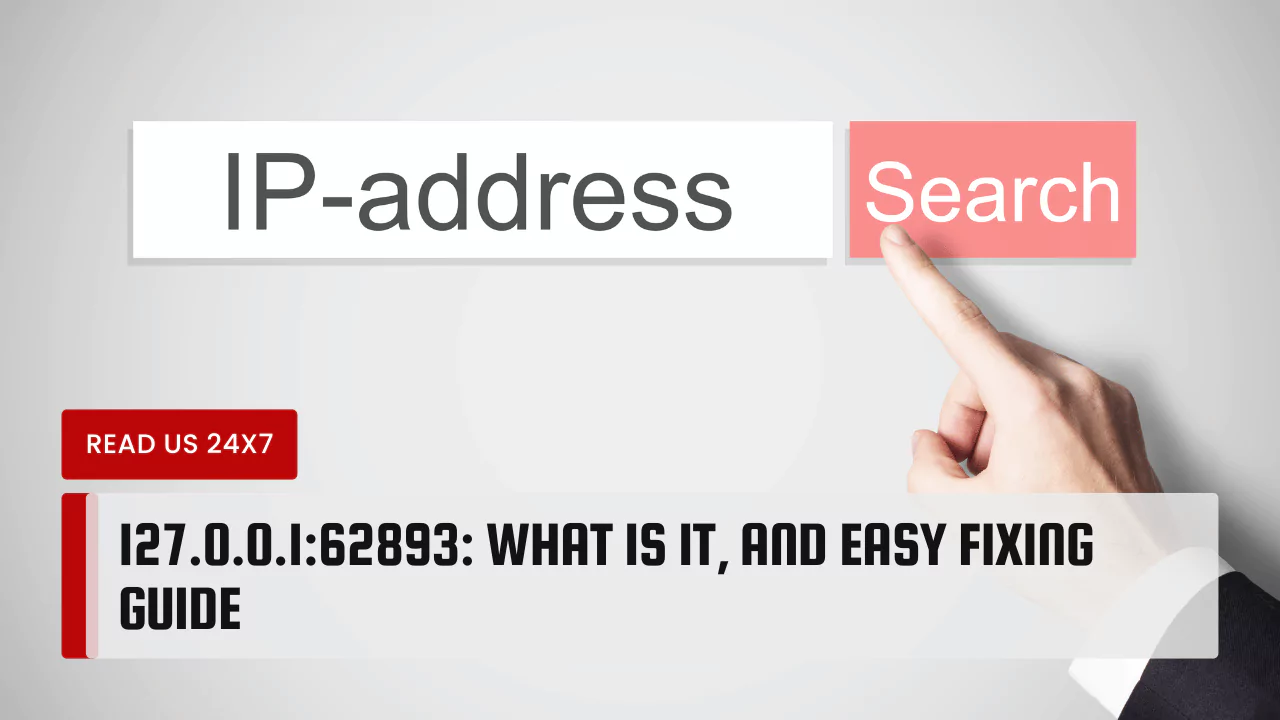Ever come across the cryptic code 127.0.0.1:62893? It might look confusing, but it’s actually a combination of two familiar things in your computer’s world: a loopback address and a port number. Let’s break it down and see how to fix any errors you might encounter.
Understanding 127.0.0.1:62893
127.0.0.1 is a special address called “localhost.” It acts like a loopback, where your computer talks to itself internally. Think of it as whispering a message in your own ear.
62893 is a port number. Ports are like designated doorways for different applications to send and receive data. Port 62893 isn’t super common, but it’s sometimes used by a program called Memcached, which helps speed up websites by storing frequently accessed information.
So, 127.0.0.1:62893 simply means you’re trying to connect to something running on your own computer, specifically on port 62893. This could be for development purposes or a program using Memcached.
Common Errors and Solutions
Now, if you see error messages related to 127.0.0.1:62893, here are some common culprits and how to fix them:
Disconnected from target VM error: This often appears during remote debugging within software like Visual Studio Code. It usually means there’s a version mismatch between your development tools or a firewall/antivirus is blocking the connection. Here’s what to try:
- Check version compatibility: Make sure your development tools are all up to date with the same versions.
- Disable firewall/antivirus temporarily: If the issue persists, try temporarily disabling your firewall or antivirus to see if it interferes. Remember to re-enable them afterward for security.
Failed to connect to localhost error: This could happen for various reasons. Here are some steps:
- Basic network check: Ensure your Wi-Fi or internet connection is stable. A weak or lost connection can cause localhost issues.
- Restart the program: Sometimes a simple restart of the program you’re using can resolve temporary glitches.
Proxy server connection failed error: If you use a proxy server, it might be interfering with the localhost connection. Try:
- Bypass the proxy for localhost: Most browsers and programs have settings to bypass the proxy server specifically for localhost addresses.
- Disable proxy temporarily: As a last resort, temporarily disable your proxy settings to see if it fixes the issue.
Tips for Fixing and Preventing Errors
Here are some general tips to keep your localhost connections smooth:
- Check network connectivity: Always ensure you have a stable internet connection or Wi-Fi signal.
- Disable conflicting software: Occasionally, other programs running in the background might conflict with localhost connections. Try closing any unnecessary applications.
- Reset TCP/IP settings: If the problem persists, consider resetting your TCP/IP settings. This can sometimes resolve network configuration issues. (Search online for specific instructions on how to do this for your operating system.)
- Update drivers: Outdated network drivers can cause connection problems. Regularly update your network drivers to ensure compatibility.
By understanding 127.0.0.1:62893 and following these tips, you can troubleshoot and prevent the most common errors related to localhost connections on your computer.



